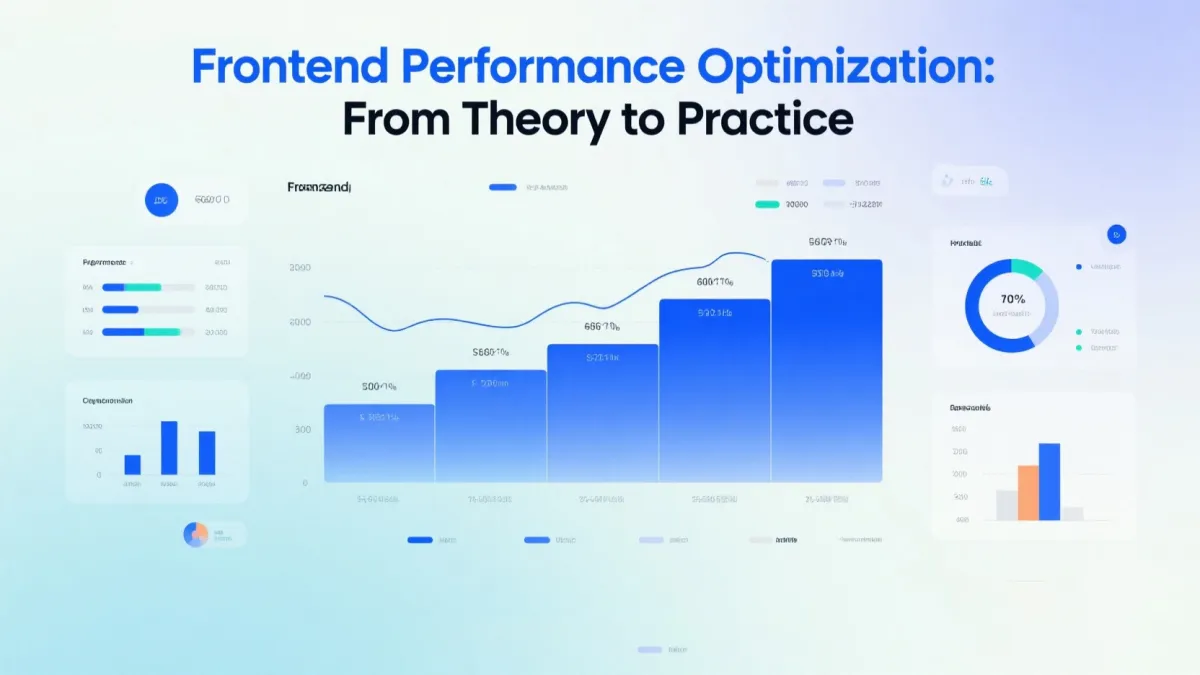
Frontend Performance Optimization: From Theory to Practice
Article Summary
Comprehensive guide to frontend performance optimization techniques, from browser fundamentals to practical application cases.
Frontend performance optimization is a key element in enhancing user experience. Starting from browser rendering principles, this article provides detailed coverage of performance optimization techniques including code splitting, lazy loading, caching strategies, image optimization, and demonstrates how to apply these techniques in modern frontend frameworks through practical examples.
Understanding Browser Rendering
To optimize frontend performance effectively, it's crucial to understand how browsers render web pages. The critical rendering path includes DOM construction, CSSOM construction, render tree creation, layout, and painting.
DOM Construction
Parse HTML and build the Document Object Model
CSSOM Construction
Parse CSS and build the CSS Object Model
Render Tree
Combine DOM and CSSOM to create render tree
Layout & Paint
Calculate positions and render pixels
Core Performance Metrics
Web Vitals
Largest Contentful Paint (LCP)
Measures loading performance
First Input Delay (FID)
Measures interactivity
Cumulative Layout Shift (CLS)
Measures visual stability
Optimization Techniques
1Code Splitting
Break your JavaScript bundles into smaller chunks that can be loaded on demand. This reduces the initial bundle size and improves load times.
// Dynamic imports for code splitting
const LazyComponent = lazy(() => import('./LazyComponent'));
// Route-based code splitting
const HomePage = lazy(() => import('./pages/Home'));
const AboutPage = lazy(() => import('./pages/About'));Benefits:
- Reduced initial bundle size
- Faster page load times
- Better caching efficiency
2Image Optimization
Modern Formats
Use modern image formats like WebP and AVIF for better compression
Responsive Images
Implement responsive images with srcset for different screen sizes
Lazy Loading
Lazy load images below the fold to improve initial load performance
Compression
Optimize image dimensions and compression ratios
3Caching Strategies
HTTP Caching
Implement proper HTTP caching headers for static assets
Service Workers
Use service workers for advanced caching and offline functionality
CDN
Leverage Content Delivery Networks for global asset distribution
Browser Cache
Implement effective browser caching strategies
4JavaScript Optimization
Framework-Specific Optimizations
React
React.memo
Use React.memo for component memoization to prevent unnecessary re-renders
Virtual Scrolling
Implement virtual scrolling for large lists to improve performance
Hooks Optimization
Optimize re-renders with useCallback and useMemo hooks
Vue
Lazy Loading
Utilize Vue's built-in lazy loading for components and routes
Component Splitting
Implement proper component splitting for better code organization
Conditional Rendering
Use v-show vs v-if appropriately based on use case
Measuring Performance
Lighthouse
Google's automated tool for improving web page quality
WebPageTest
Comprehensive web performance testing tool
Browser DevTools
Built-in browser tools for performance analysis
Set up continuous monitoring to catch performance regressions early and maintain optimal user experience.
Conclusion
Frontend performance optimization is an ongoing process that requires understanding of browser internals, proper tooling, and continuous monitoring. Focus on user-centric metrics and implement optimizations that provide the biggest impact for your users.
Performance Optimization Checklist:
- ✅ Implement code splitting and lazy loading
- ✅ Optimize images and use modern formats
- ✅ Set up effective caching strategies
- ✅ Minimize and optimize JavaScript/CSS
- ✅ Use framework-specific optimizations
- ✅ Monitor performance continuously